The Celibate Machine
April 6 – May 6, 2018
Interstate Projects
66 Knickerbocker Avenue
Brooklyn, NY
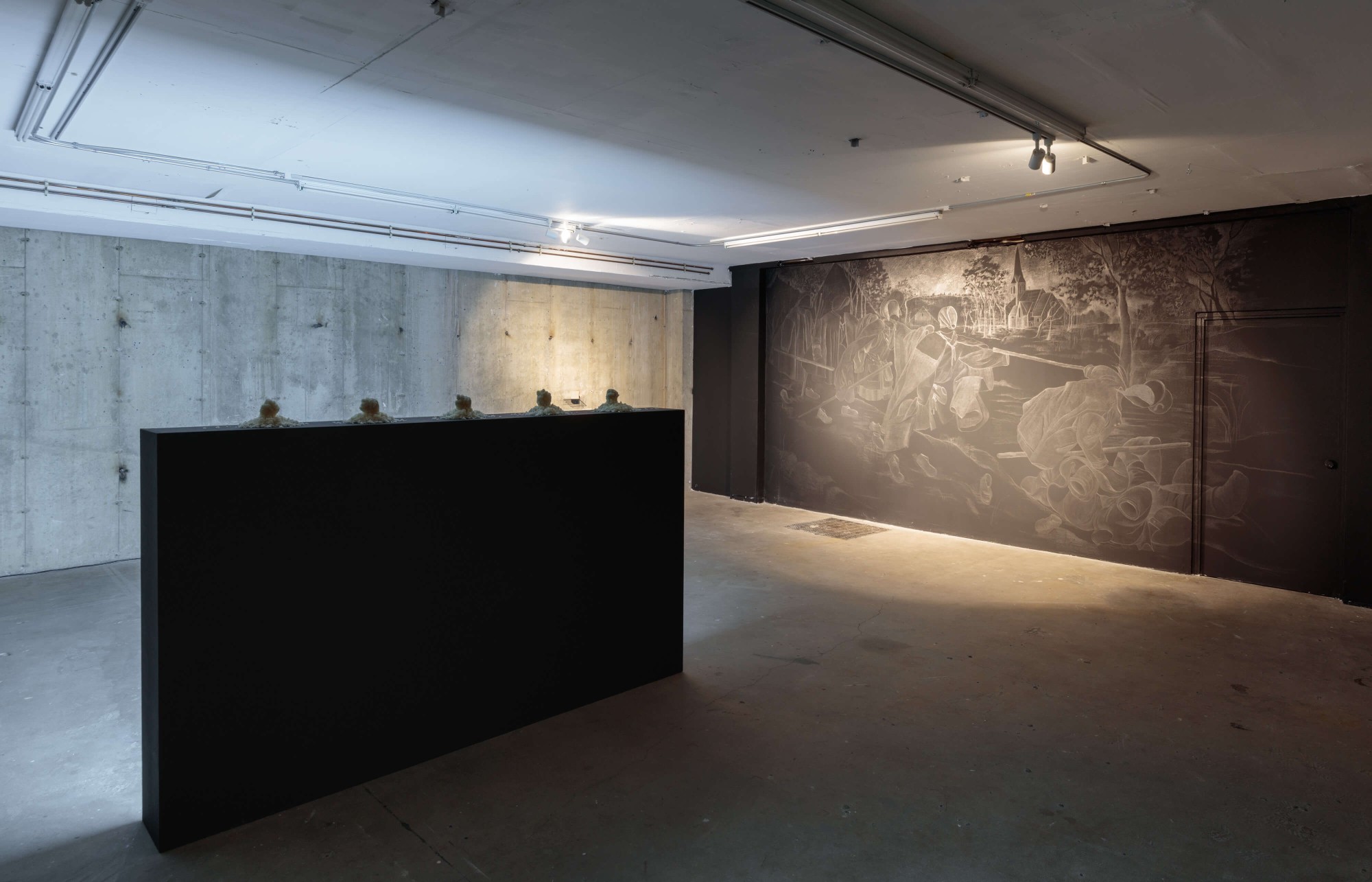

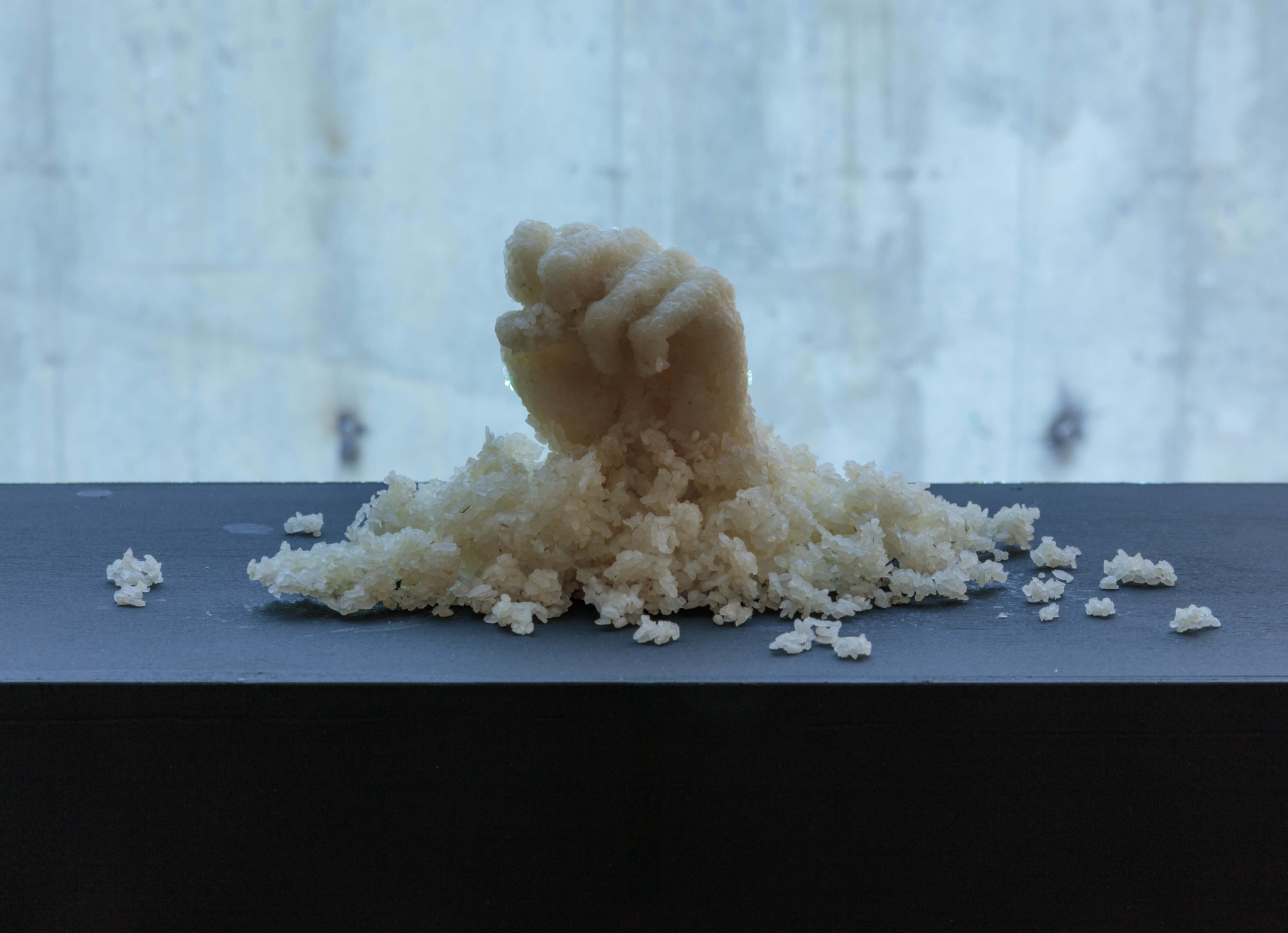
주먹밥: Azza, Brook, Geetha, Jenny, Sara. 2018. Dimensions variable. Rice and gum arabic
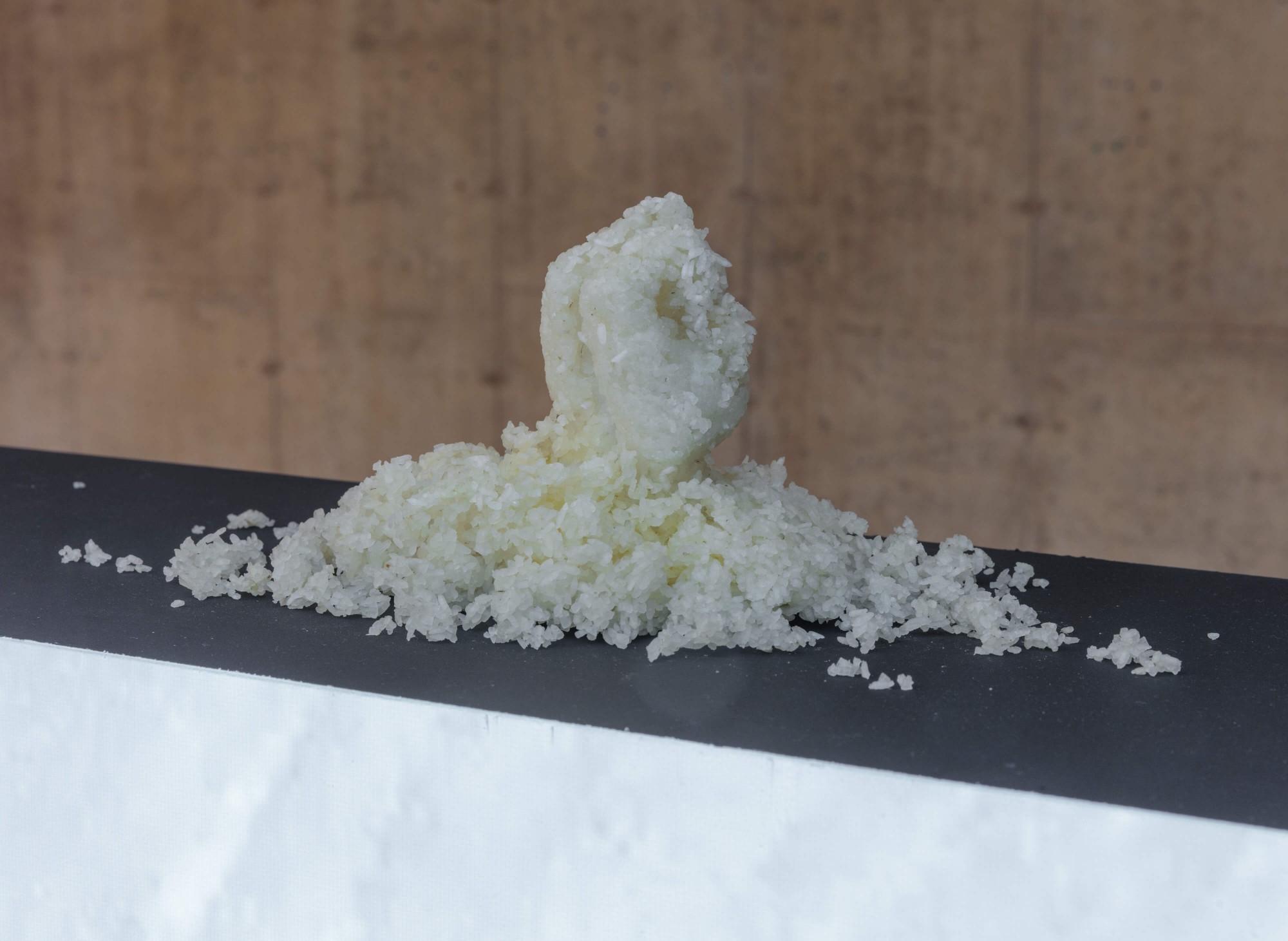
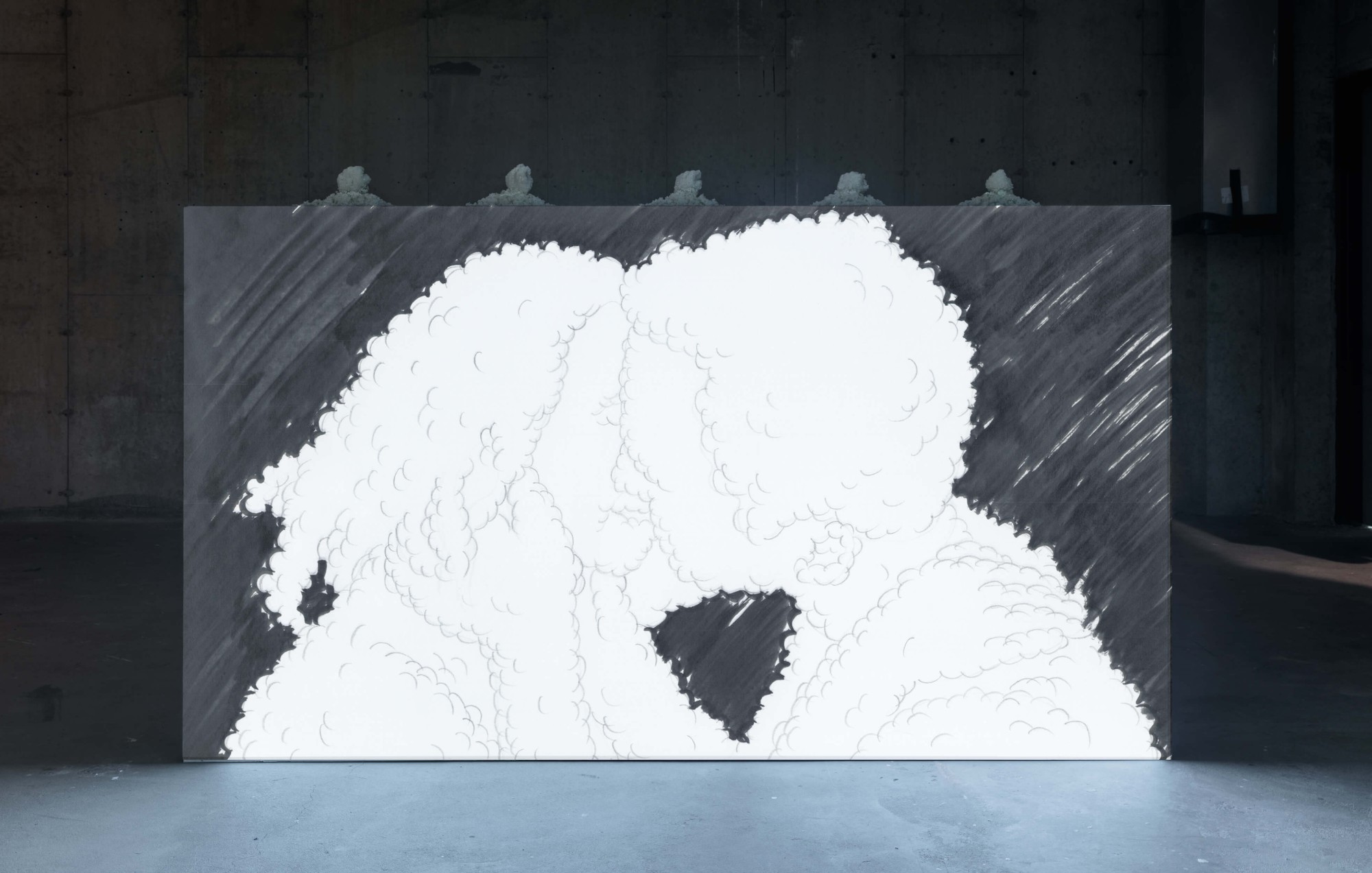
As a Dog Returns to Its Vomit, a Man Repeats His Sins. 2018. 1 min 8 sec. HDV on loop
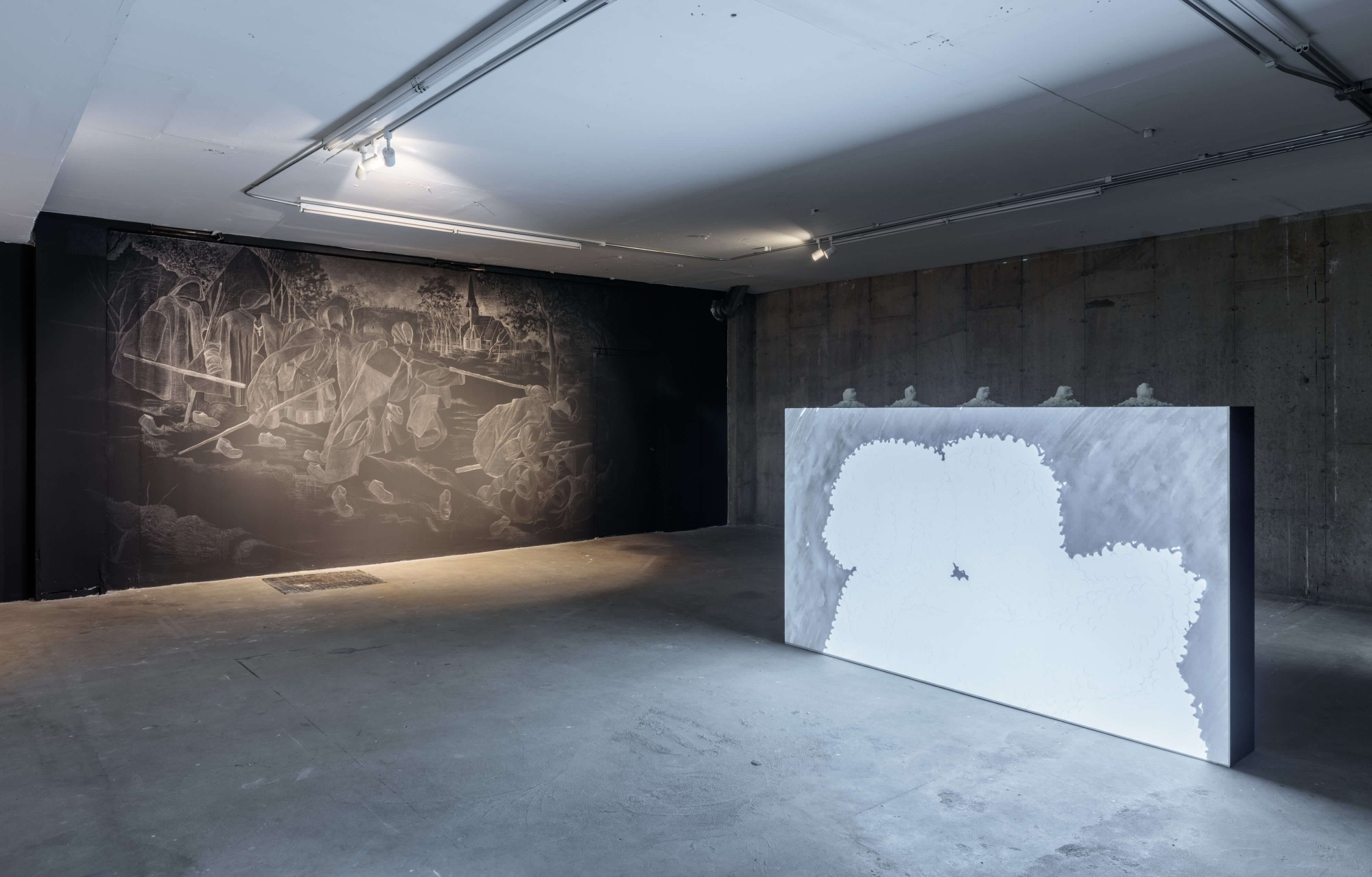

The Parable of the Blind, after Bruegel. 2018. 28' x 10'. Latex acrylic and graphite on wall


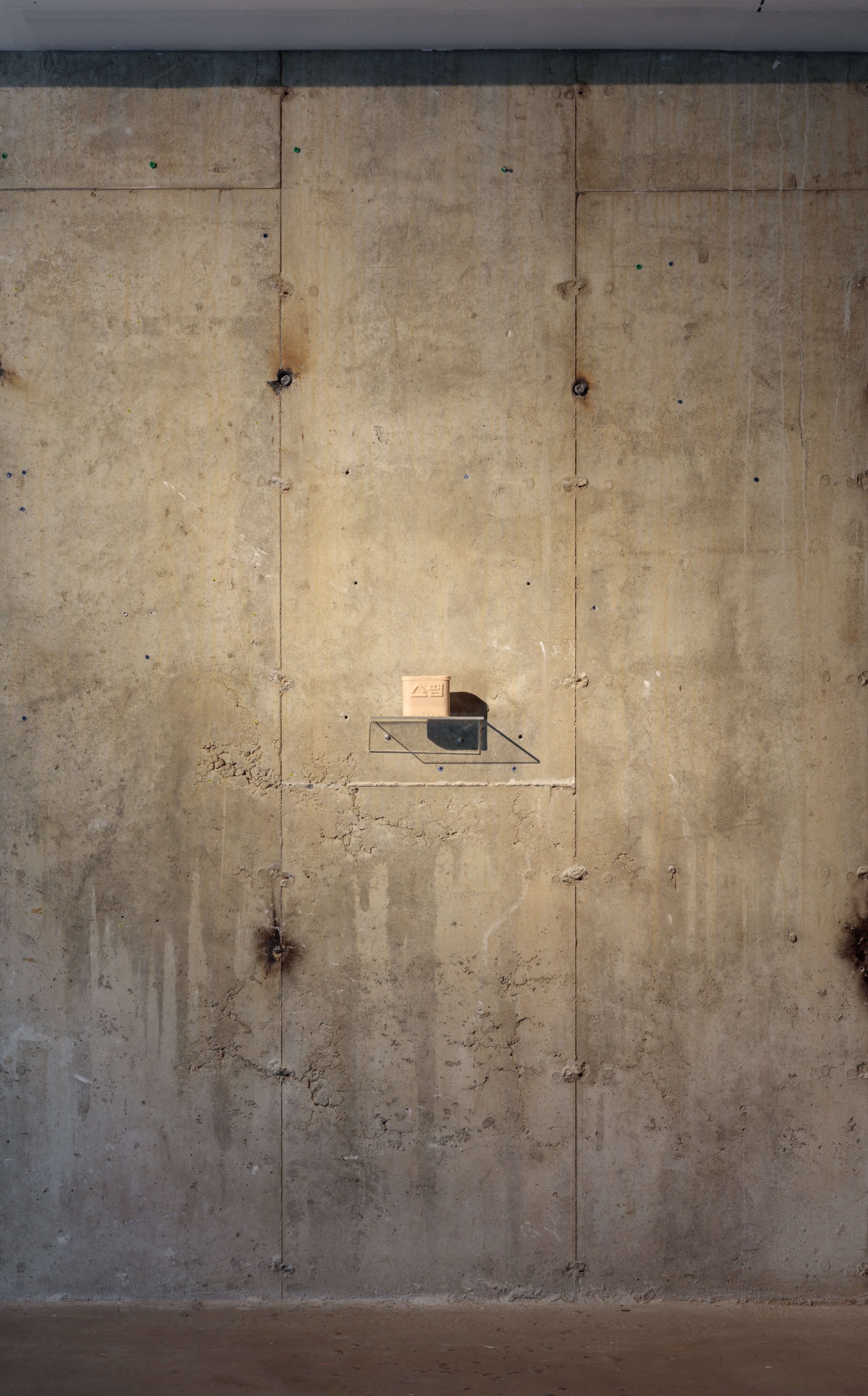
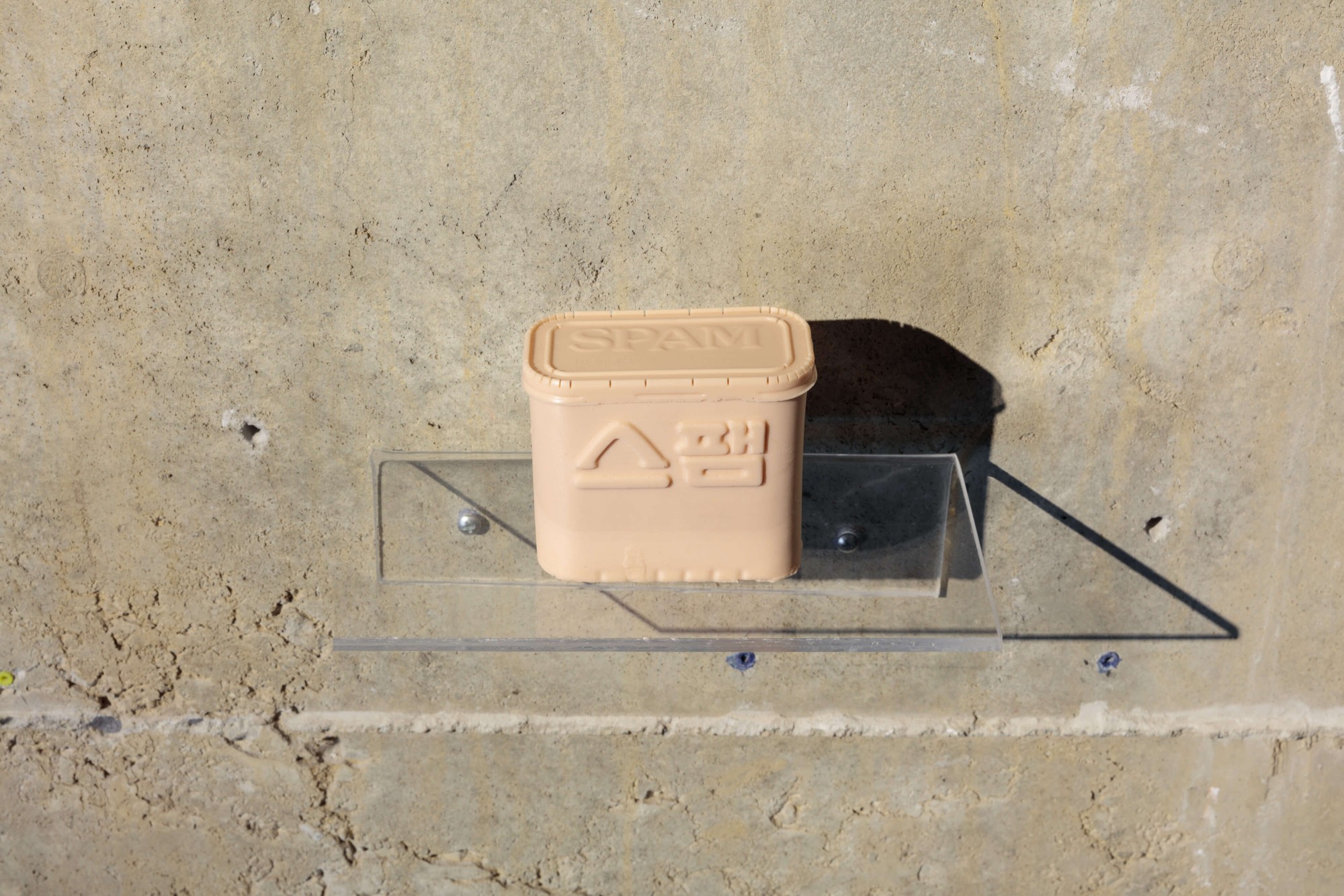
SPAM. 2018. 4" x 4" x 1". Silicone rubber
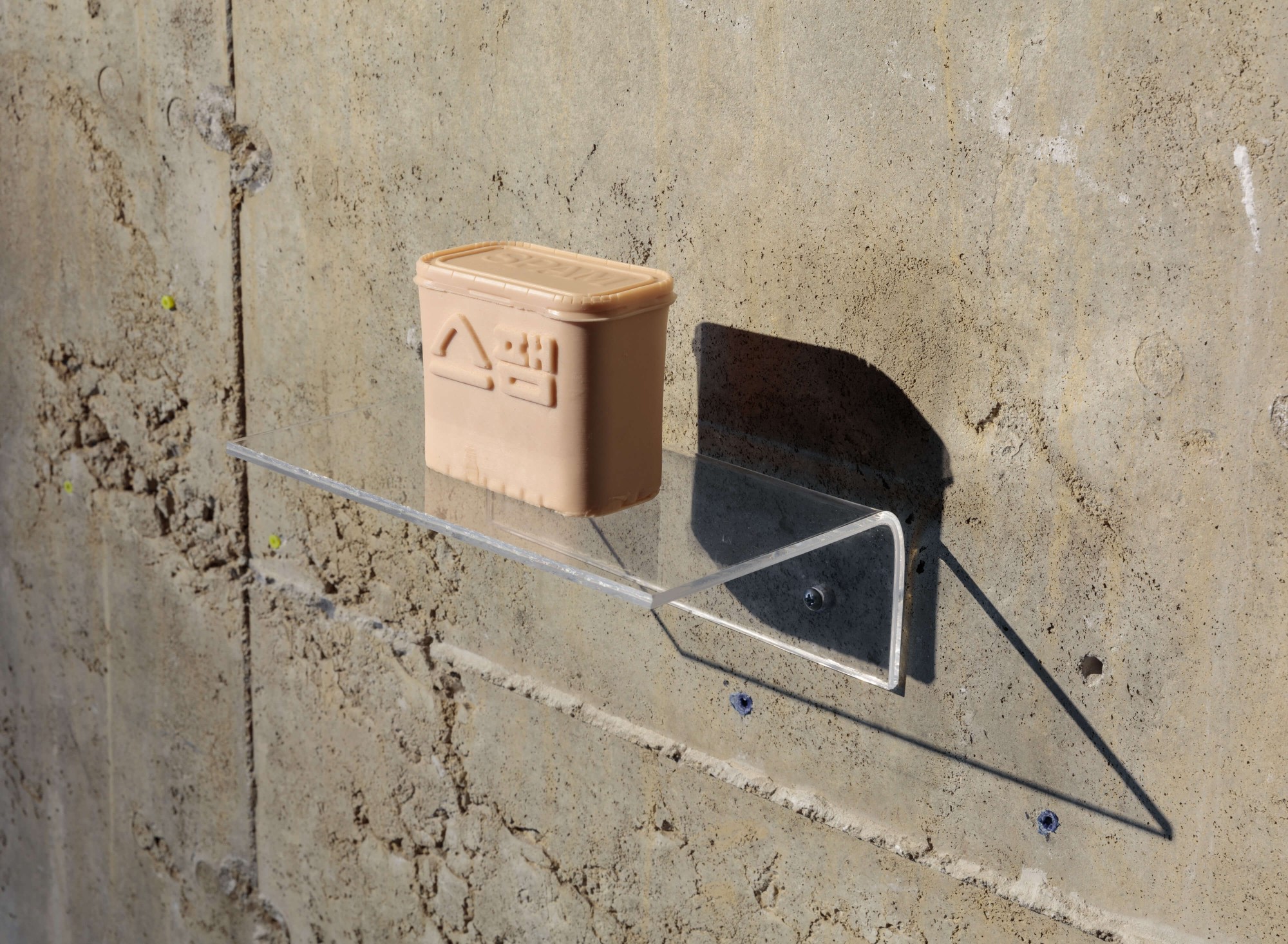
The ideas for The Celibate Machine began when I started working for an animation studio last year. Working as the “wrist” (industry nickname referring to an illustrator), my job was to draw, or in a more specific term, to rotoscope, which is an animation technique that traces the frames of live action footage as an image sequence. The whole production followed a pretty consistent routine; I would receive a reference video, re-export it at a lower frame rate, project the footage onto a drawing board, and copy. The only important rule that I had to follow was to copy each frame with a degree of imperfection, to keep the drawings somewhat messy in order to show the presence of my “hand.”
Setting itself apart from factory animation outsourced from countries like the Philippines, India, and South Korea, this imperfect “hand” has become a popular look, followed by strange pride of having been made in America. I found this mode of image production – the aestheticization of human labor applied as a stylistic mask – both fascinating and perverse. Seeing myself as a Wrist-Hand machine that can process the technique of imitation as an authentic surface treatment at my day job as well as in my studio, it was unnerving to examine my painting practice resonating so much within the formal elements of mass-appeal and efficiency.
I found the history of SPAM in Korea sharing a similar, but an inverse relationship with the rotoscoping method in its ability to move between the imitated to the authentic. SPAM was first introduced in Korea as rations for American G.I.s during the Korean War and was regarded as a luxury item amongst Koreans when food was scarce throughout the postwar era. This foreign “fake” meat has now become a staple ingredient in Korean cuisine, a novelty item given as holiday gifts in contemporary South Korea. People don't need to rummage through the army dumpster or befriend American officers to acquire SPAM anymore, but its history of rarity and association with wealth has sedimented its cultural value, like a layer that can mask and override its violent past.
My grandmother lived through the Japanese Occupation and the Korean War, and one of the most memorable anecdotes she had shared with me is how everybody in her village made rice balls to feed the soldiers, who were basically the fathers, sons, and brothers of their neighbors. Rice balls (or rice fists, if you translate it literally from Korean) were what the village could afford to mass produce - they were easy to make, easy to transport, like SPAM, and could simulate fullness by quantity, kind of like how rotoscoping method achieves its aesthetic. I recreated the rice balls by making the molds of my friends’ fists and casted them with rice. This process of extracting the shell and giving it substance is how the rest of the pieces in the show were made: the animation as a series of tracings, the sculptures as duplicates, and the mural as a copy.
Bruegel’s 1568 painting The Parable of the Blind is drawn with graphite and is copied directly onto the gallery wall using a projector. The wall is painted black, so when the image was projected, every line of graphite drawn on surface reflected the lights from the projector, eventually excavating the painting as an inverse image. The only alteration I applied to the mural is omission of bodies of the six blind men. I wanted to assert my hand by a way of negation, and I think this gesture of cloaking and becoming visible only in its masquerade, is the central concern I explore in the show.
Cindy Ji Hye Kim, 2018.
Curated by Jonah Porter